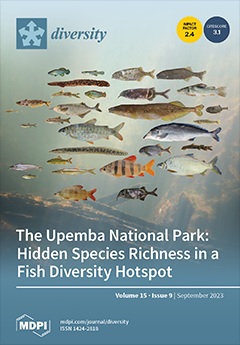Ver ítem
- xmlui.general.dspace_homeCentros Regionales y EEAsCentro Regional Mendoza - San JuanEEA San JuanArtículos científicosxmlui.ArtifactBrowser.ItemViewer.trail
- Inicio
- Centros Regionales y EEAs
- Centro Regional Mendoza - San Juan
- EEA San Juan
- Artículos científicos
- Ver ítem
The diversity of arbuscular mycorrhizal fungi and their associations in South America: A case study of argentinean and brazilian cattle raising productive ecosystems: A review
Resumen
Mycorrhizal fungus diversity is an ecosystem health indicator, and thus, the appreciation of the aboveground as well as the belowground biota, such as fungi associated with natural and managed ecosystems, is essential to provide sustainable products and suggestions to farmers. Less is known about the totally arbuscular mycorrhizal fungi (AMF) and fungal endophytes useful to agroecology, which are environment friendly microbial biofertilizers to mitigate
[ver mas...]
Mycorrhizal fungus diversity is an ecosystem health indicator, and thus, the appreciation of the aboveground as well as the belowground biota, such as fungi associated with natural and managed ecosystems, is essential to provide sustainable products and suggestions to farmers. Less is known about the totally arbuscular mycorrhizal fungi (AMF) and fungal endophytes useful to agroecology, which are environment friendly microbial biofertilizers to mitigate the complications of conventional farming. Specific AMF are found in most covers; grassy ecosystems are increasingly investigated through their exclusive fungal species that improve sustainable cultivation. Different grazed pastures, forages, and their diversity are important objects of study either in economic or ecological scope. Based on recent reports, the occurrence of AMF in grasslands and pastures is significant, supporting more diverse AMF than native forests. Therefore, we show current information on these topics. We conducted a Web of Science search of published articles on AMF, pastures, and grasslands and analyzed them. The results confirmed the important role of pH as the driver of AMF diversity distribution between the grassy ecosystems from Argentina and Brazil. In grasslands, the main family represented was Glomeraceae, while pastures maintain predominantly Acaulosporaceae. Brazilian grasslands and pastures presented four times the AMF richness of those from Argentina.
[Cerrar]

Autor
Lugo, Mónica A.;
Ontivero, Roberto Emanuel;
Iriarte, Hebe J.;
Yelikbayev, Bakhytzhan;
Pagano, Marcela C.;
Fuente
Diversity 15 (9) : 1006 (September 2023)
Fecha
2023-09-10
Editorial
MDPI
ISSN
1424-2818
Formato
pdf
Tipo de documento
artículo
Palabras Claves
Derechos de acceso
Abierto
 Excepto donde se diga explicitamente, este item se publica bajo la siguiente descripción: Creative Commons Attribution-NonCommercial-ShareAlike 2.5 Unported (CC BY-NC-SA 2.5)
Excepto donde se diga explicitamente, este item se publica bajo la siguiente descripción: Creative Commons Attribution-NonCommercial-ShareAlike 2.5 Unported (CC BY-NC-SA 2.5)


